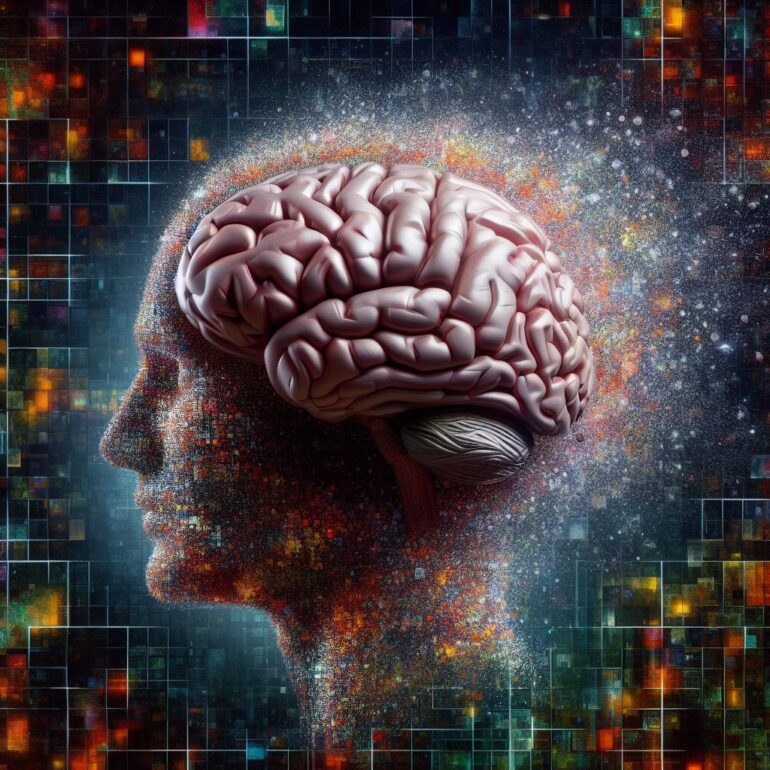TL;DR:
- Cambridge scientists reveal that imposing physical constraints on AI systems mimics the brain’s development in complex organisms.
- Neural systems, like the human brain, balance resource allocation for growth and information processing, leading to similar organizational solutions across species.
- A study using an artificial system with physical constraints demonstrates the development of brain-like characteristics.
- The system, with computational nodes instead of neurons, successfully completes a maze navigation task.
- Physical constraints force the system to develop hubs and flexible coding schemes, mirroring the brain’s efficiency.
- Implications for understanding brain differences and cognitive health.
- Potential for designing more efficient AI systems tailored to specific problems.
Main AI News:
In the realm of AI research, Cambridge scientists have unveiled a fascinating revelation. By imposing physical constraints on artificial intelligence systems, akin to the limitations faced by the human brain within the realms of biology and space, they’ve unlocked the ability for AI to emulate features reminiscent of complex organisms’ brains while tackling tasks.
As we delve into the intricate world of neural systems, we discover the delicate balance they strike. These systems must allocate energy and resources for growth and sustainability within physical space, all while optimizing for information processing. It’s a trade-off that shapes the organizational solutions across various species, offering insights into the convergence of brain structures.
Jascha Achterberg, a Gates Scholar from the Medical Research Council Cognition and Brain Sciences Unit (MRC CBSU) at the University of Cambridge, pointed out, “Not only is the brain great at solving complex problems, it does so while using very little energy. In our new work, we show that considering the brain’s problem-solving abilities alongside its goal of spending as few resources as possible can help us understand why brains look like they do.”
Dr. Danyal Akarca, a co-lead author from MRC CBSU, further elaborated, “This stems from a broad principle, which is that biological systems commonly evolve to make the most of what energetic resources they have available to them. The solutions they come to are often very elegant and reflect the trade-offs between various forces imposed on them.”
In a groundbreaking study published in Nature Machine Intelligence, Achterberg, Akarca, and their colleagues designed an artificial system that mimics a simplified version of the human brain and applied physical constraints. Rather than real neurons, this system employed computational nodes, which functioned similarly to neurons in our brains by processing inputs and generating outputs while connecting to other nodes.
However, the key differentiator was the ‘physical’ constraint imposed on the system. Each node was allocated a specific virtual location, and communication between nodes became increasingly challenging the further apart they were, mirroring the organization of neurons in the human brain.
To put this system to the test, the researchers assigned it a simplified maze navigation task, reminiscent of challenges given to animals like rats and macaques in brain studies. This task required the system to integrate multiple pieces of information to determine the shortest route from start to finish.
Initially, the system struggled, making mistakes as it grappled with the task. Yet, it learned from feedback, adjusting the strength of connections between its nodes—a process akin to how our brain cells strengthen connections when we learn. Over time, through repetition, the system became proficient at the task.
The physical constraint, however, added an intriguing twist. It made building connections between distant nodes in response to feedback more challenging, mirroring the brain’s aversion to expending excessive energy on distant connections. Despite this constraint, the artificial system adopted strategies similar to the human brain to complete the task, even developing hubs to facilitate information flow across the network.
More remarkably, the response profiles of individual nodes evolved, embracing a ‘flexible coding scheme.’ Unlike a rigid one-property encoding, these nodes could represent multiple aspects of the maze task, akin to the complex brains of living organisms.
Co-author Professor Duncan Astle, from Cambridge’s Department of Psychiatry, highlighted the significance of this simple constraint, explaining how it forces artificial systems to manifest intricate characteristics akin to the human brain.
This research holds the promise of shedding light on how these constraints contribute to brain differences among individuals, potentially illuminating the origins of cognitive and mental health disparities.
Co-author Professor John Duncan from the MRC CBSU emphasized the potential for AI to decipher the complexities of real neurons’ activity in actual brains, thanks to these artificial ‘brains.’
Beyond neuroscience, these findings have implications for designing more efficient AI systems, particularly in situations with physical constraints. Dr. Akarca noted, “AI researchers are constantly trying to work out how to make complex, neural systems that can encode and perform in a flexible way that is efficient.“
In the AI community, where diverse architectures are employed, this study underscores the significance of tailoring the system’s architecture to the specific problem it aims to solve. As Achterberg concludes, “If you want to build an artificially-intelligent system that solves similar problems to humans, then ultimately the system will end up looking much closer to an actual brain.” This revelation holds the potential to reshape the future of AI, making it more akin to the intricate and efficient structures of our own minds.
Conclusion:
This breakthrough in AI development, mirroring the efficiency of the human brain through physical constraints, has profound implications for the market. It opens doors to more efficient AI systems, particularly in scenarios with physical limitations. This shift could revolutionize industries relying on AI, leading to the creation of AI systems that perform tasks with remarkable efficiency, similar to the human brain, while optimizing resource usage.

